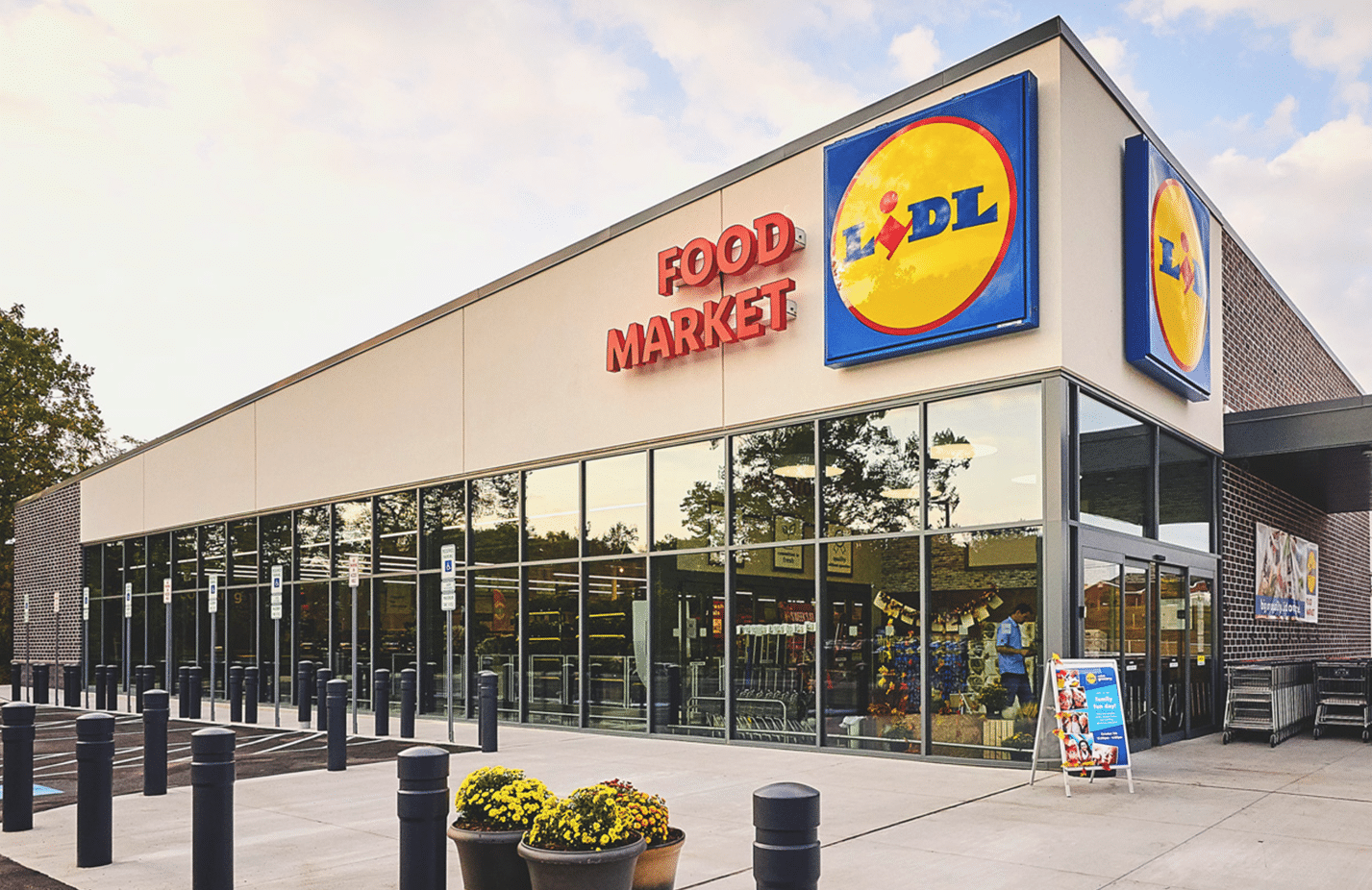
Americans seem to love their neighborhood German-owned small grocery store stocked with the basics at everyday low prices. So, since ALDI is doing so well, surely they’d like an alternative German-owned small grocery store – except this one is somewhat larger, stocks a broader range of items, and offers coupons and rewards in addition to low prices.
That’s what the owners of Lidl figured, when they began opening stores in the U.S. back in 2017. But as ALDI turbo-charges its expansion – announcing plans to buy twice as many grocery stores in one fell swoop as Lidl has in total so far – a new report takes a look at why ALDI is succeeding, and what Lidl needs to do to catch up.
The retail analytics company dunnhumby dug into its data about the two discount grocers to prepare “Aldi, Lidl; Their different Trajectories in the U.S.“, which aims to explain “the different trajectories between the two German retailers in the U.S., who globally are nearly equal in size.”
ALDI currently has more than 2,300 stores in 38 U.S. states, and last month announced plans to purchase some 400 Winn-Dixie and Harveys grocery stores in the Southeast. Lidl currently has a much smaller footprint, with 171 stores in nine East Coast states. But that’s not the only difference between the two. ALDI has been here nearly 50 years, Lidl only six. Lidl stores are up to twice as large with twice as many products as ALDI. And Lidl offers coupons and deals, whereas ALDI likes to stick to everyday low prices without any additional frills.
So shouldn’t Lidl be winning, with more items to choose from and more ways to save?
Data from dunnhumby’s recent Retailer Preference Index found that shoppers aren’t fully on board with what Lidl is offering. “ALDI appears to be superior at doing more with less, which makes the shopping experience feel easier,” dunnhumby noted. Even though Lidl has bigger stores and a larger product selection, shoppers told dunnhumby that ALDI bests Lidl in having “the right variety of products to meet my needs” and allows them to “do all of my shopping at this one store.” They also appreciate that ALDI “already has low prices without lots of discounts/coupons.” ALDI scored first among all grocery retailers in that category, while Lidl was eighth.
Many shoppers who do some of their shopping at Lidl also do some shopping at ALDI, and other grocery chains. So no one grocery store is going to get 100% of their customers’ business. But ALDI manages to capture 22% of their shoppers’ grocery budgets, while Lidl gets only 16%. And shoppers are simply more emotionally invested in ALDI. When asked to rank grocery chains based on whether they “would be sad if this store closed,” ALDI ranked ninth and Lidl was way down the list at 52nd.
But dunnhumby points out that “Lidl is uniquely differentiated from ALDI – and any other retailer in the U.S. – in its one-two combination of market-leading base prices and solid loyalty program adoption.” You can shop at Lidl without taking advantage of coupons and deals, and still get a good price. But Lidl bests ALDI when shoppers were asked which store “offers significant, relevant and frequent rewards” and has an app that “makes shopping easier.”
The challenge that Lidl faces, dunnhumby concludes, is that it’s “essentially a second-mover on a core competency first brought to the market by ALDI.” ALDI had decades to perfect its formula in the U.S. before Lidl came along. So Lidl is still trying to see what works, mimicking ALDI in some ways while also looking for ways to differentiate itself.
ALDI’s planned acquisition of much larger Winn-Dixie grocery stores could be a crucial game changer for Lidl’s larger competitor. While ALDI plans to convert some of its newly-acquired stores to ALDIs, it also expects to keep some of them as-is, which will allow it to diversify and capture even more of its customers’ grocery dollars. Shoppers might visit ALDI for their necessities, and Winn-Dixie for a greater selection – and ALDI cashes in both times.
So Lidl, dunnhumby says, is going to have to step it up. “Despite excellent prices and a strong private brand portfolio,” dunnhumby’s report says, Lidl still seems to have “some slight misalignment between customer needs, assortment, and store experience.” If it’s going to have a larger product selection, it’s going to need to make sure it’s the selection that shoppers want. If it’s going to offer coupons and deals, it’s going to need to increase its focus on personalization, communication and relevance. And if it’s going to attract shoppers who aren’t already comfortable with ALDI, it’s going to need to expand to parts of the country, like the West, where ALDI doesn’t have a foothold yet.
If that happens, “Lidl could have a future in the U.S. as bright as ALDI,” dunnhumby concludes. And that will ultimately be best for shoppers – since two successful discount grocers competing for your business, are certainly better than one.
Image source: Lidl















